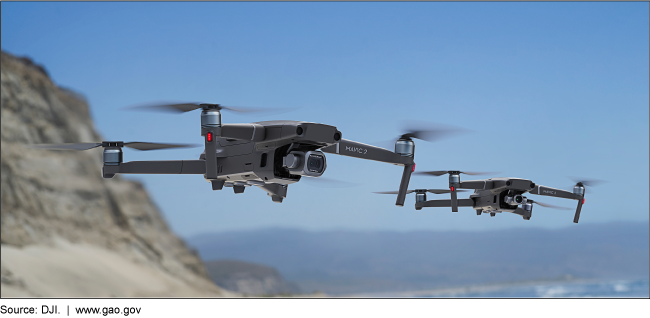The US Government Accountability Office (GAO) says the “Federal Aviation Administration (FAA) and Congress could choose to set user fees to help FAA recover costs” in a report published on 17 December 2019. The Unmanned Aircraft Systems report on cost recovery released by the Office of Public Affairs recommends improving drone-related cost information and using available guidance to better position FAA to potentially recover those costs with fees in the future.
The report acknowledges that drones can deliver packages, help fight fires, and provide other benefits in the US. However, it says demands on FAA staff and resources are increasing as FAA works to safely integrate drones into the nation’s airspace.
The GAO report found “the FAA has undertaken actions to integrate unmanned aircraft systems (UAS or “drones”) into the national airspace and has developed plans to allow for increasingly complex operations, including operations over people and beyond visual-line-of-sight and—eventually—passenger operations. However, FAA efforts to track related costs may result in incomplete information. FAA established a means of tracking the costs associated with some UAS-activities in certain offices, but many, if not all, FAA offices are doing work related to both manned aviation and UAS.
“FAA officials stated that they do not know or plan to assess the extent to which staff who split their time between UAS-activities and other responsibilities are tracking those costs. Furthermore, FAA’s future costs to conduct oversight and provide air navigation services are largely unknown due to the changing nature of the industry and its early stage of development. Ensuring that information on UAS-related costs is complete and reliable now could put FAA in a better position to identify those costs as they evolve and possibly expand in the future.”
The GAO report stops short of advising the extent to which FAA should recover costs for its UAS-related activities, and what fees are appropriate, as these are policy decisions for the administration and Congress.
Since 2015, FAA has collected a registration fee from UAS operators, but most of FAA’s UAS costs are not related to registration or covered by this fee. A stakeholder group established by FAA identified potential fee mechanisms and concluded in 2018 that the aviation industry, FAA, and Congress should identify revenue streams to help fund FAA’s UAS activities. Further, GAO guidance and Office of Management and Budget instructions provide a framework, including information requirements, for designing effective user fees. FAA officials said that they have not considered user fee mechanisms as part of their planning because they have been awaiting this report to inform their decision-making. By using available guidance as part of its planning, FAA could incorporate steps, such as identifying costs and beneficiaries, which would benefit future fee design considerations.
The GAO recommends that FAA (1) implement a process to ensure UAS-related cost information is complete and (2) use available guidance on effective fee design to incorporate steps, as part of UAS integration planning, that will inform future fee design considerations. FAA concurred with the recommendations.
For more information visit:




